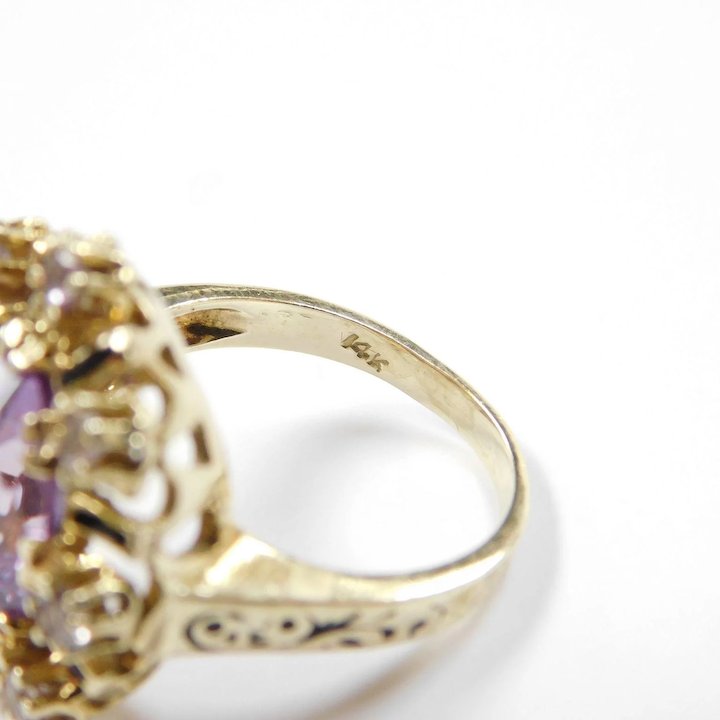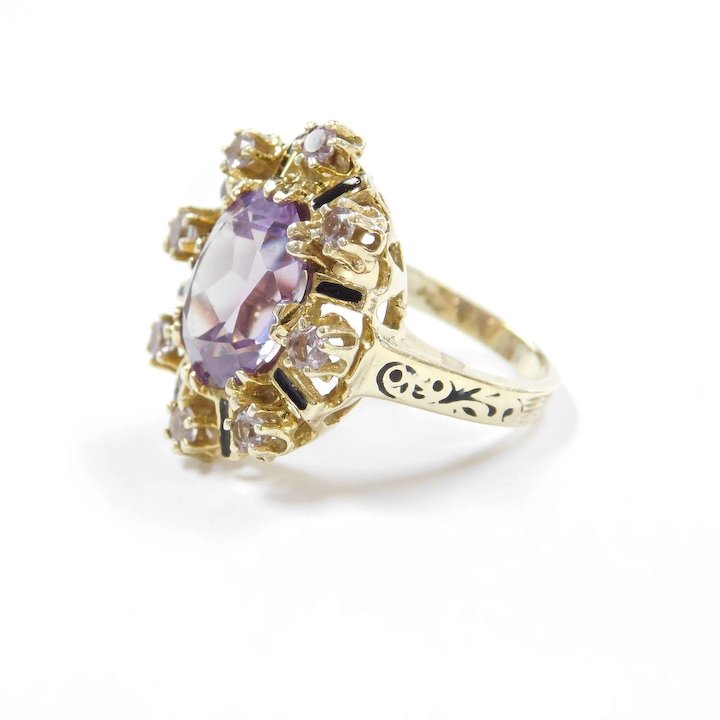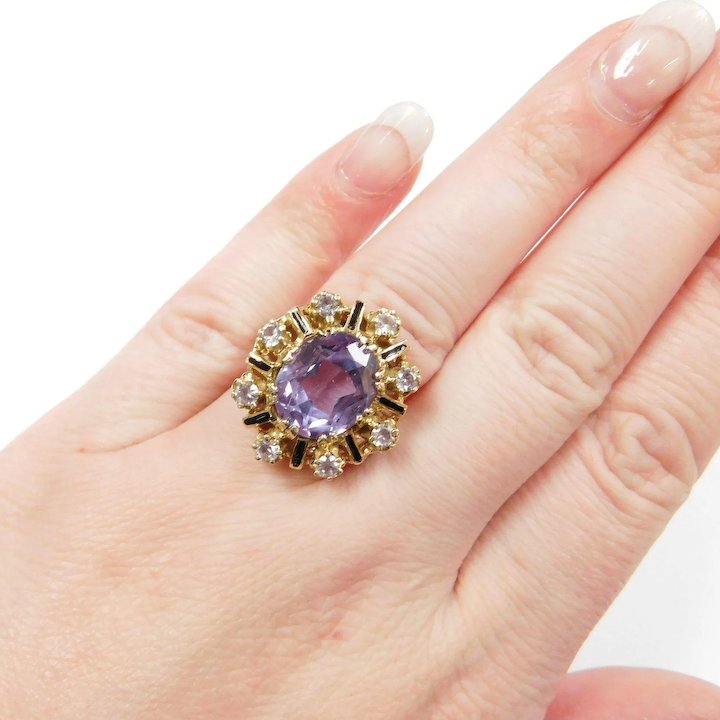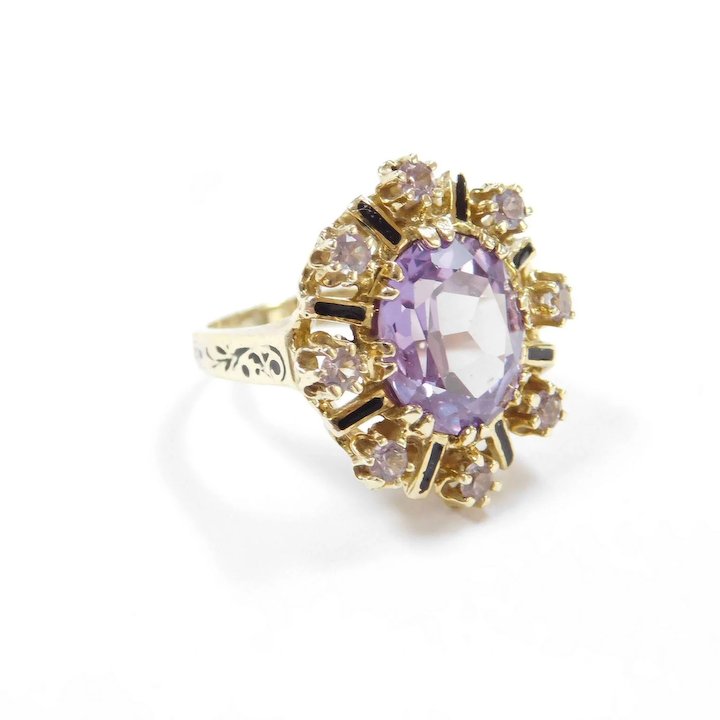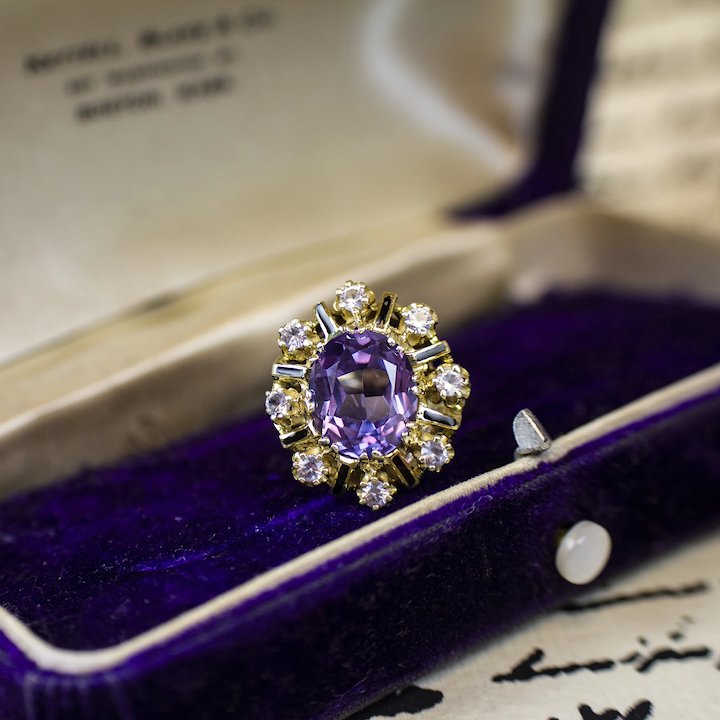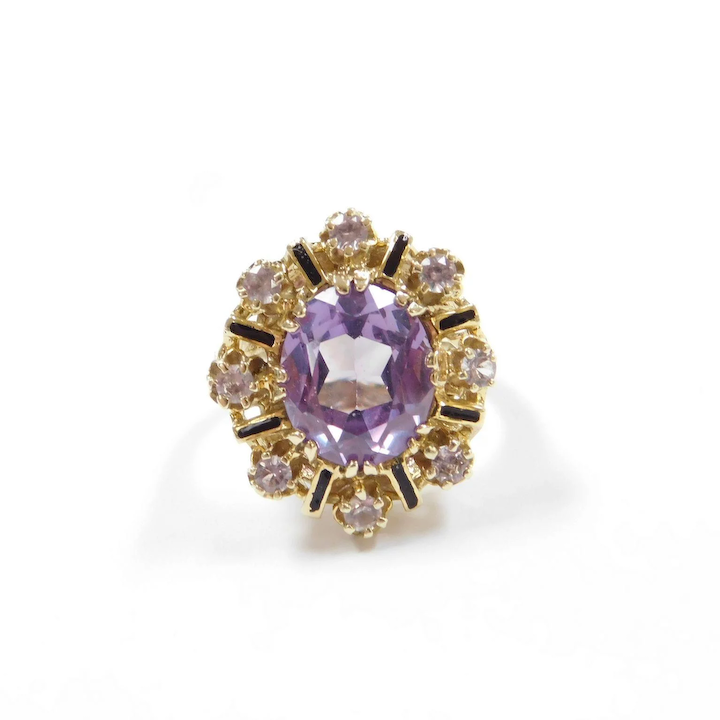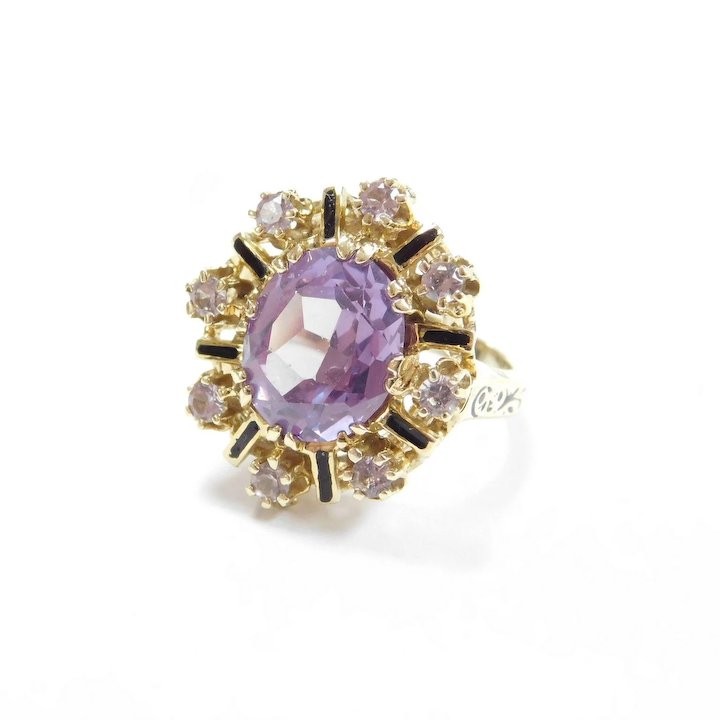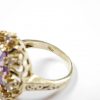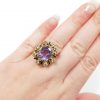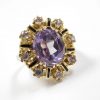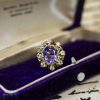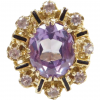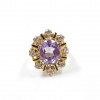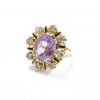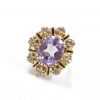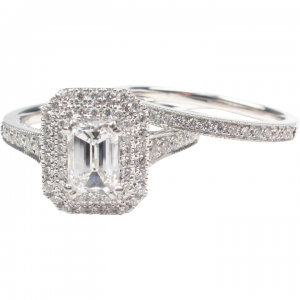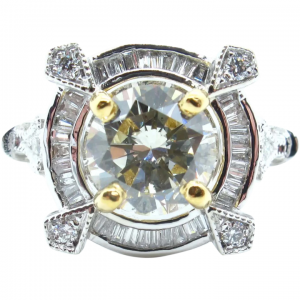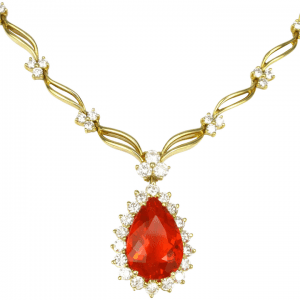Vintage 14k Gold Alexandrite and Enamel Ring
COMPOSITION: 14k Yellow Gold, Acid tested
GEM: Oval Alexandrite 6.00 Carat, Natural Round Alexandrite .64 ctw, Black Enamel
CONDITION: Estate Item, Very good
WEIGHT: 7.9 Grams
MEASUREMENT: Band 2.2mm, Design 7/8″
MARKS: 14k
SIZE: 6. Ring can be sized for an additional fee. Please inquire if needed.
COMMENTS: Circa early 1900’s. This beautiful ring has a 6.00 carat color changing alexandrite in the center. The colors of the stone do not photograph well but it changes from purple to a light green color. The small round alexandrites around the ring are natural because they are more pale in color yet still have a faint lavender / green tint depending on the light. The larger center stone is likely lab grown but would need to be removed and sent to GIA for further testing. There is black enamel detail around the ring and down the shank. Pictured as received from a local estate. Very good estate condition with minimal wear indicative of age. Cleaning and/or polishing to near new by request at no additional cost.
Alexandrite, with its chameleon-like qualities, is a rare variety of the mineral chrysoberyl. Its color can be a lovely green in daylight or fluorescent light, changing to brownish or purplish red in the incandescent light from a lamp or candle flame. This is a result of the complex way the mineral absorbs light.
Alexandrite’s dramatic color change is sometimes described as “emerald by day, ruby by night.” Other gems also change color in response to a light-source change, but this gem’s transformation is so striking that the phenomenon itself is often called “the alexandrite effect.”
Alexandrite is also a strongly pleochroic gem, which means it can show different colors when viewed from different directions. Typically, its three pleochroic colors are green, orange, and purple-red. However, the striking color change doesn’t arise from the gem’s pleochroism, but rather from the mineral’s unusual light-absorbing properties.
Because of its scarcity, especially in larger sizes, alexandrite is a relatively expensive member of the chrysoberyl family. It shares its status as a June birthstone with cultured pearl and moonstone.

